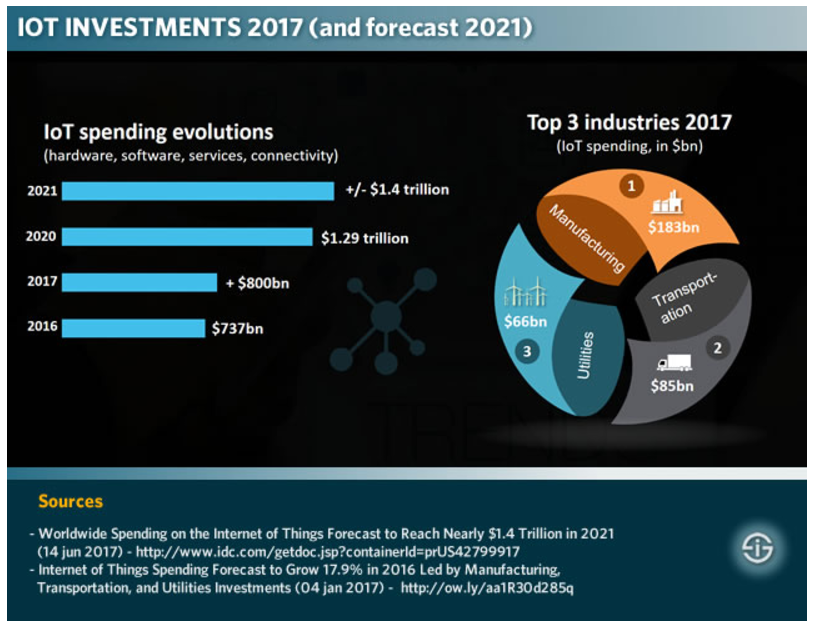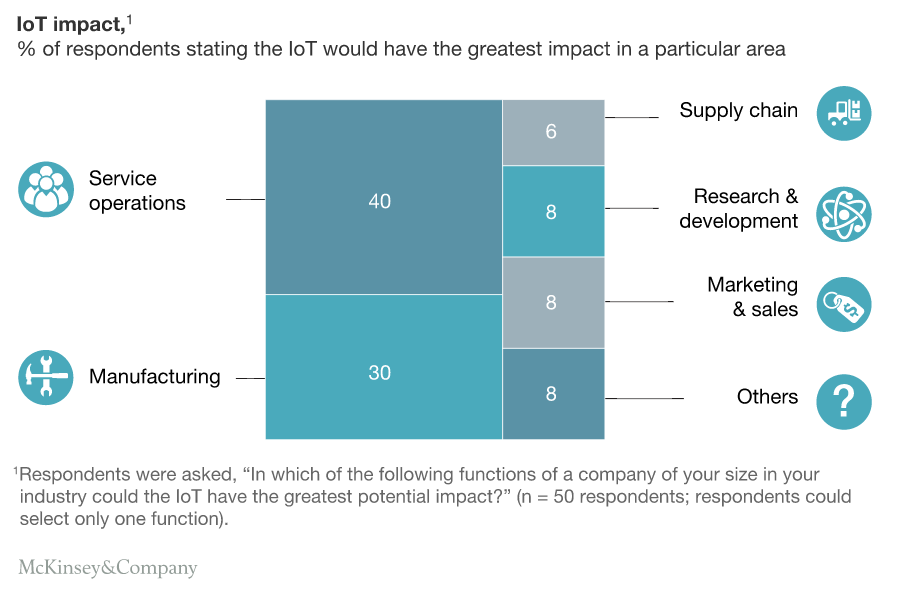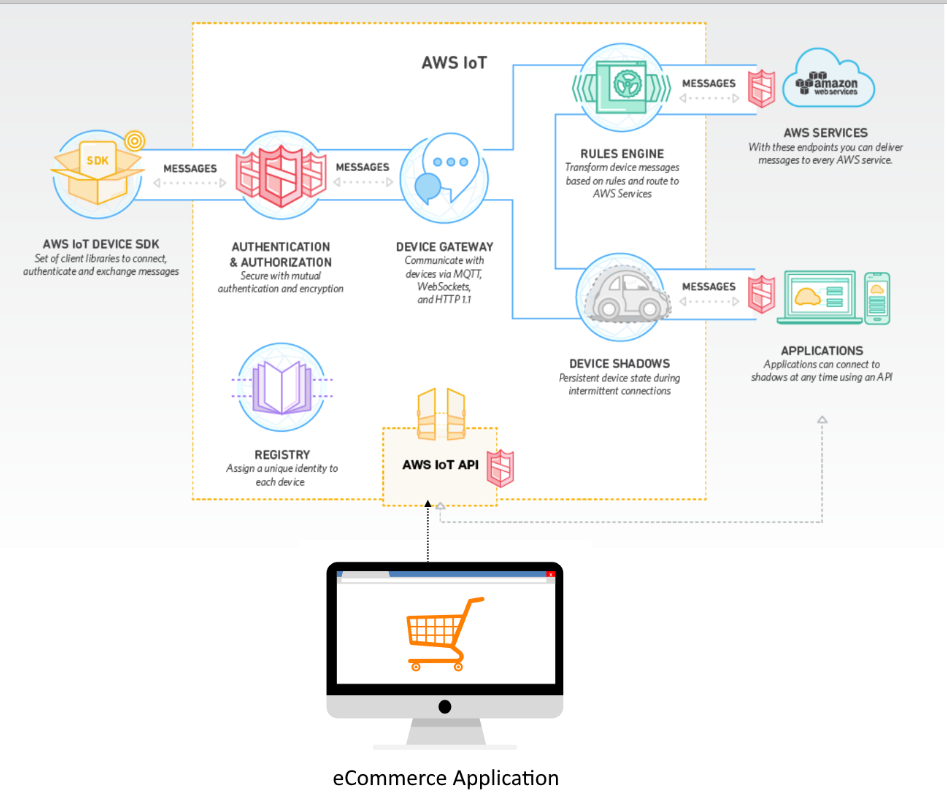Enhance your eCommerce offering with IoT
Making the case
Unless you are hiding under a rock, I am sure you have heard about the Internet of Things (IoT). If you have heard about it but are still thinking about including IoT in your commerce offering, we would advise you not to wait. It’s time to act!
What is IoT anyway? Instead of explaining in technical terms, let’s just see it through an example. One of my many anxieties in my home life is the failure of appliances in my house. One of them is the Sump Pump. I am not sure when that pump will fail and flood my finished basement. Every time it rains heavily, I try to hear if the Sump Pump is making noises and running. This anxiety could have been avoided only if my Sump Pump had a device that could communicate to my phone in case of possible failure. I am sure, I am not the only one out there with this kind of anxiety. There are many people like me. This is one of many things that IoT can solve. Devices can connect to other devices and also can connect to the consumer in many meaningful ways. This is the IoT, having connected devices using the internet.
In a recent report, International Data Corporation (IDC) forecasted that worldwide investment in IoT is expected to reach $1.4 trillion in 2021. The following chart shows an annual investment forecast in IoT from 2016 to 2021, going from $737 Billion to $1.4 Trillion, respectively.

Source: i-scoop
It is to be noticed that Manufacturing is the largest area of investments. Manufacturing and B2B commerce is closely related and a major portion of this investment will be turned into profit by incorporating IoT in B2B commerce as services or increasing sales by device monitoring & diagnostics.
In a recent survey, Mckinsey & Company asked which area IoT will have greatest impact and the answer was clearly Service and Manufacturing, as you can see in the figure below.

Source: McKinsey & Company
Manufacturers can sell services by device monitoring & inspection, diagnostics, and predictive maintenance. By investing in IoT, manufacturers can make their devices more efficient it terms of resource & process optimization, asset utilization, and quality management; thus, making their devices more attractive to customers.
To bring back the Sump Pump example, a manufacturer can sell the Sump Pump’s health monitoring and failure as a service for an additional charge. Even if they don’t sell this service, but add it as an additional feature to the pump, they will make the product more attractive to consumers. A Sump Pump is really a simple product. Industrial machines are expensive and lot more complex. Having data to monitor these machines can save lot of money.
Technology Consideration
What are different technological aspects we need to consider?
- Big Data: A manufacturer will probably sell hundreds of thousands of machines and each with many sensors. The amount of data these sensors will emit is huge and that requires a data store that can scale.
- Analytics: Consumers of device data would like to see the data in a format that makes sense to them, so that they can make a decision. Analytics are absolutely necessary to provide meaningful data representation from huge amounts of captured data.
- Pub/Sub Architecture: A Publish and Subscription architecture is really helpful for IoT communication. If both the sender and receiver agree to communicate, that will save a lot of unnecessary bandwidth consumption. Many IoT devices have small code footprint or limited network bandwidth. These devices can take advantage of MQTT protocol. MQTT (Message Queue Telemetry Transport) is a publish/subscribe based lightweight protocol on top of TCP/IP.
- Rules Engine: Many IoT devices will send notifications or filter data before storing it based on different parameters in the sensors data. A flexible rules engine is essential for business users to declaratively setup the filtering criteria of their own.
- Machine Learning: Some devices need to learn from the data. For example, Nest thermostat learns from activities in home and adjusts itself to certain temperature at different times. A system that provides Machine Learning algorithms can send input to control the machines with human interaction.
- Security: Security is really important for IoT devices. Since the devices are connected via internet, they are vulnerable to hacking and the consequence of hacking can be lethal. Imagine what will happen if a hacker finds a way to connect to someone’s pacemaker. All communication between devices should be encrypted via TLS and connection should be secured using appropriate credentials.
It is clear from the above list that, it needs lot of expertise and investment to create an infrastructure for IoT. It makes sense to look for a cloud based solution rather than create your own. Most big Cloud provider companies like Amazon, Google, Microsoft, Oracle etc. realized the market potential and already have their IoT Cloud Service.
Role of eCommerce in IoT
I already mentioned companies can sell IoT service. When customers buy the product, the services can be offered like a product in the eCommerce application. Most eCommerce applications like InsiteCommerce, and Sitecore Commerce have an entitlement feature. Use of the entitlement feature will enable the sale of services. What eCommerce software doesn’t provide is integration with IoT Cloud Services. That’s where companies like Nish Tech can help clients. We have an expertise of integrating both Sitecore Commerce and Insite Commerce with different systems and we have done this many time. We are happy to see that our clients from the manufacturing sector are already producing IoT enabled products. Recently Nidec Motor Corp., announced the release FORECYTE™ a standalone remote monitoring platform. Here is also a nice overview of Nidec’s approach to IoT for their products.
Below is an architecture diagram of AWS IoT Cloud and integration with eCommerce system.

Integrating eCommerce with IoT will provide a common platform for customers to buy and consume the IoT service. It is possible to have a list of IoT service in customers account dashboard and show the device health or analytics information in the dashboard itself. To achieve this kind of integration in eCommerce, it is important to have an eCommerce platform with open and extensible architecture. Both InsiteCommerce and Sitecore Commerce provide open and pluggable architecture. Some time back I wrote a blog to show How Insite can be Integrated with Twilio to reach customers via SMS. Integration architecture for IoT Cloud is similar and the InsiteCommerce platform is ready for that. Sitecore’s recent Commerce Engine architecture is based on Pluggable Components and integration with any IoT Cloud provider will be done through that approach.
This is an exciting time for technology. We are looking forward to seeing our clients come on board, take advantage of IoT and become a leader in the market.